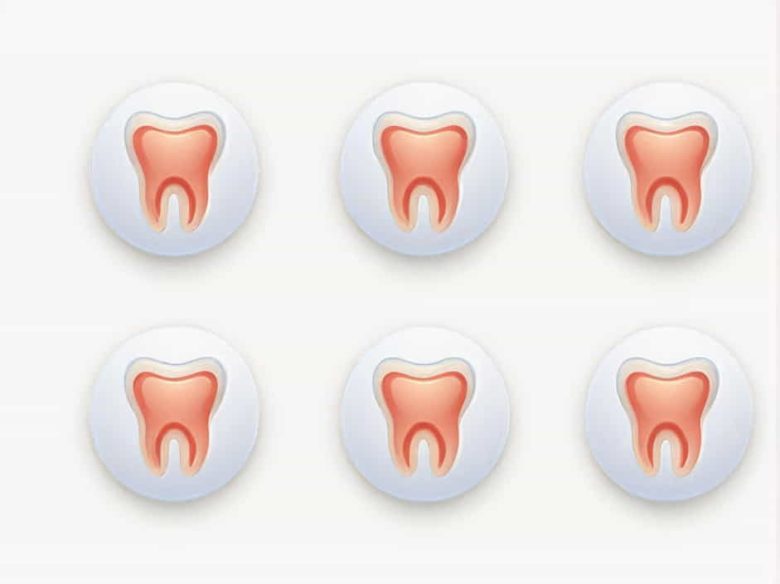Tooth mobility is an essential factor in dental health assessment. It refers to the movement of a tooth within its socket when pressure is applied. Dentists evaluate and chart tooth mobility to determine the stability of the teeth and the condition of the supporting structures.
Tooth mobility can indicate periodontal disease trauma or occlusal issues. By understanding how tooth mobility is measured and recorded both patients and dental professionals can work together to prevent further complications.
What Is Tooth Mobility?
Tooth mobility refers to the degree of movement a tooth exhibits within its socket. While minimal mobility is normal due to the periodontal ligament’s flexibility excessive mobility is often a sign of an underlying issue.
Normal vs. Abnormal Tooth Mobility
- Normal Mobility: Slight movement (0.1-0.2 mm) due to the periodontal ligament’s elasticity.
- Abnormal Mobility: Increased movement indicating possible bone loss periodontal disease or trauma.
Causes of Tooth Mobility
Several factors contribute to increased tooth mobility including:
1. Periodontal Disease
- Gum infections can damage the periodontal ligament and alveolar bone.
- Advanced periodontitis leads to severe bone loss and increased tooth movement.
2. Trauma or Injury
- Accidents sports injuries or excessive grinding (bruxism) can loosen teeth.
- Orthodontic treatments may temporarily increase mobility as teeth shift.
3. Occlusal Forces
- Excessive biting forces or an unbalanced bite can lead to traumatic occlusion causing mobility.
4. Systemic Conditions
- Osteoporosis diabetes and hormonal changes can weaken bone support.
- Pregnancy-related hormonal fluctuations may temporarily increase tooth mobility.
How Tooth Mobility Is Evaluated
Visual and Manual Examination
- The dentist inspects the gums bone levels and overall oral health.
- Mobility is tested by gently applying pressure with a dental mirror or two blunt-ended instruments.
Miller’s Classification of Tooth Mobility
Tooth mobility is measured using Miller’s Classification which includes:
| Grade | Mobility Level | Description |
|---|---|---|
| Grade 0 | None | Normal no mobility. |
| Grade 1 | Slight | Up to 1 mm of horizontal movement. |
| Grade 2 | Moderate | 1-2 mm of horizontal movement. |
| Grade 3 | Severe | More than 2 mm of movement or vertical displacement. |
How Tooth Mobility Is Charted in Dental Records
To ensure accurate tracking and treatment planning tooth mobility is recorded in the patient’s dental chart.
Steps in Charting Tooth Mobility
- Identifying the Affected Tooth – Each tooth is examined individually.
- Grading the Mobility – Based on Miller’s Classification the dentist assigns a mobility grade.
- Recording in the Dental Chart – The mobility grade is noted often using symbols or numbers.
- Monitoring Changes Over Time – Regular checkups help determine if the mobility is progressing stabilizing or improving.
Treatment Options for Tooth Mobility
The treatment for tooth mobility depends on the underlying cause.
1. Periodontal Treatment
- Scaling and root planing to remove plaque and tartar.
- Gum grafting or bone grafting to restore lost support.
2. Occlusal Adjustment
- Bite correction through reshaping high points on teeth.
- Nightguards for bruxism to reduce excessive forces.
3. Splinting Loose Teeth
- Teeth may be stabilized using splints attached to neighboring teeth.
- Temporary or permanent splints help prevent further movement.
4. Restorative and Surgical Treatments
- Dental implants may be needed if a tooth is lost.
- Extraction and prosthetic replacement if mobility is severe and untreatable.
Preventing Tooth Mobility
✔ Maintain good oral hygiene – Brush and floss daily to prevent gum disease.
✔ Regular dental checkups – Early detection can prevent severe mobility.
✔ Avoid excessive forces – Wear a nightguard if you grind your teeth.
✔ Manage systemic conditions – Control diabetes and osteoporosis for better bone health.
Tooth mobility is an important indicator of oral health. Dentists evaluate and chart mobility to diagnose periodontal disease trauma or occlusal imbalances.
By understanding the causes evaluation and treatment options patients can take proactive steps to protect their teeth and prevent further complications. Regular dental visits and good oral care are key to maintaining strong stable teeth for life.


